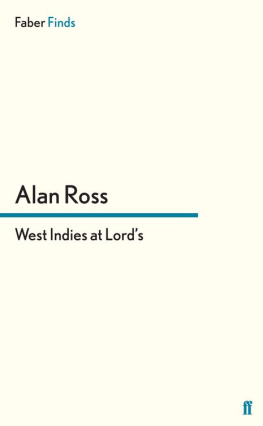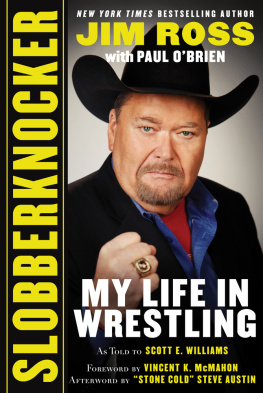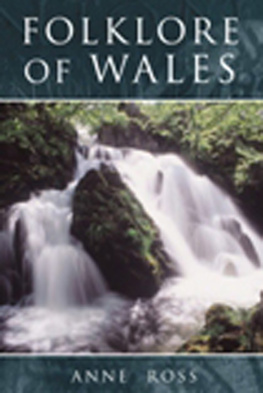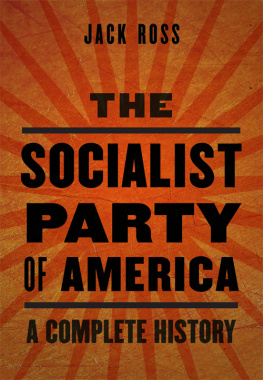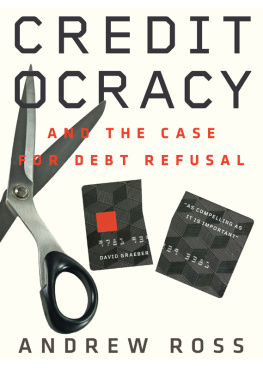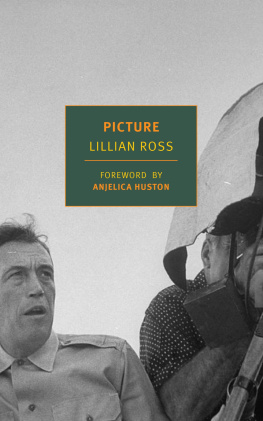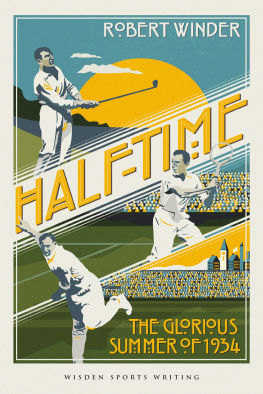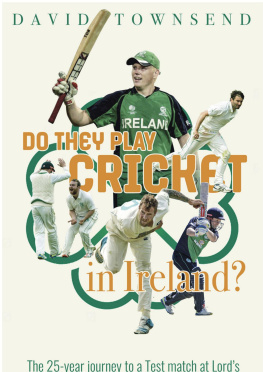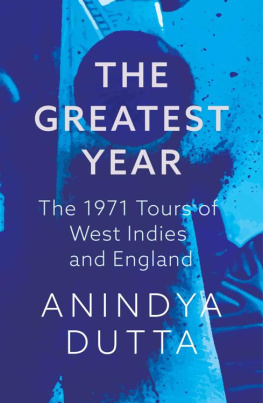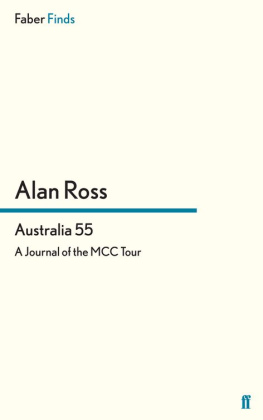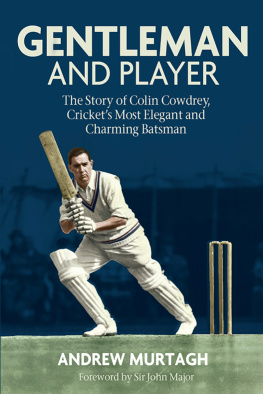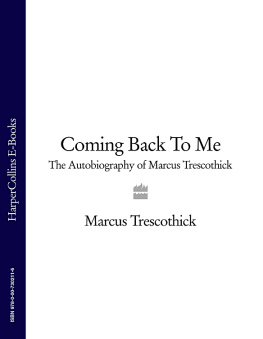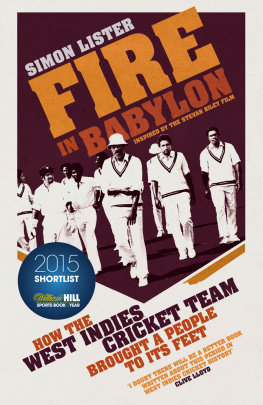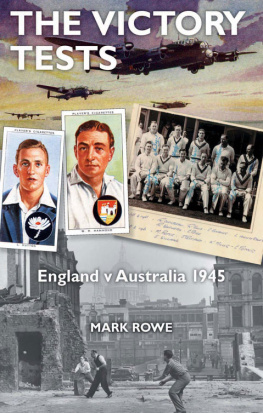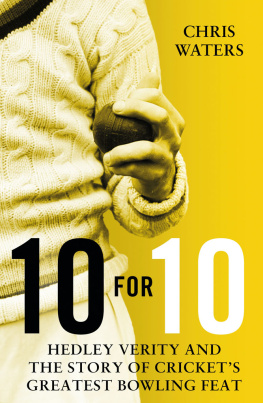The photographs numbered 129 are all reproduced by courtesy of Sport and General Press Agency Ltd; No. 30 by courtesy of ThePeople.
Some 25 years ago Handasyde Buchanan, an eccentric never seen in public without an Old Rugbeian tie, and a partner in the celebrated bookshop of Heywood Hill in Curzon Street, and I, spent a number of enjoyable lunches planning an anthology of great cricket matches. The book, containing 30 items, appeared under Buchanans editorship in 1962. We can scarcely have expected as we shuffled our selections about that the very next summer a match would be played at Lords between England and West Indies, that would certainly have had to be included.
Not all our choices were Test matches. As well as England v Australia at Sydney in 1894/5 there were the Roses matches of 1893 and 1905; as well as South Africa v England at Johannesburg in 1905/6 there was the Eton v Harrow match of 1910. A dozen or so games, described variously by P. G. H. Fender, Neville Cardus, J. H. Fingleton and Sir Pelham Warner, had to be between England and Australia, but we included, too, RobertsonGlasgow on Surreys visit to Taunton in 1925, A Country Vicar on Oxford v Cambridge in 1928, A. A. Thomson on Gentlemen v Players at Lords in 1950, and, of course, Fingletons account of the Brisbane tie between Australia and West Indies in 1960, the only tied Test in the history of the game, and in Fingletons estimation the greatest Test of all up till then.
The match that is described in these pages did not end as a tie, but it was the next best thing, England finishing six runs short and West Indies needing only one wicket.
Re-reading for the first time what I wrote 23 years ago brings back a match of continual excitement, fluctuating fortune and some sadness. Frank Worrell was soon to die, perhaps the germs of his death already in him, and Ken Barrington, too, long before his time.
West Indies then were not the all conquering brutalisers of the game they are at present and, though they won the series convincingly in the end, they had not beaten England since 1950. At Edgbaston, in the Test following Lords, they were routed, Trueman bowling beautifully to take 5 for 75 and 7 for 44. But at Headingley and the Oval the English batsmen found Griffith too awkward a customer, the West Indian taking nine wickets in each match.
There is nothing more I want to say now about the game in question. It needs to be read like a novel, a story of twists and turns, of leisurely development and thrilling episodes. It was the match of a lifetime.
ALAN ROSS
London, 1986
Every so often there comes a Test match which, without reference to what precedes it or comes after, exists in its own right. It acquires the inevitability of a work of art, it gives off the aroma of a choice bloom, the soil for which has been long and lovingly tended, and the lesser, swarming shoots cut back to make way for it. There have been many glorious and sweeping victories in Test cricket, achieved sometimes against all odds, but it is the essence of this particular kind of match, the sport bred of two cultures, that at the finish it should be precisely balanced. The Brisbane tie between West Indies and Australia in 1960 was plainly of this order, hurrying to its fantastic climax; the drawn match, immortalized by Bailey and Watson, at Lords against Australia in 1953 was another; but neither throughout its length quite compared with the Lords Test of this year, in which England and West Indies, having fought each other to a standstill, ended up six runs and one wicket short respectively. It was not only a match of constantly fluctuating fortune and advantage, flaming to sudden heights of drama, but one in which half a dozen performances remain indelibly printed on the collective memory of those lucky enough to see them. Dexters first innings, scornfully achieved against the worlds two fastest bowlers, both on the rampage, produced one of the most astonishing hours cricket ever seen at Lords. Butcher, on the Saturday, and Close, on the final afternoon, played in their different ways innings of heroic stature. Cowdreys catching, the bowling of Hall and Griffith, and above all that of Trueman, who took eleven wickets, were such as to make any match memorable. There were as many subsidiary performances, each integral to the final result. Over and above this, Lords was packed to overflowing, disappointed queues stretching to all parts of St Johns Wood, the crowd inside every bit as West Indian as English. Every ball bowled produced a reaction of some sort and, in between, the hubbub died away to an electric stillness. It was as if the sound had been orchestrated, identifying melodies emerging from the mass to elaborate private themes. For three days, after the gloomiest of forecasts, the sun shone; when, after the week-end, the rain returned, it was able to intrude, not to deter. How precisely it affected the result is incalculable ; possibly England might have won on the fourth evening, despite Cowdreys blow, but then again they might not.
West Indies, since the war, have enjoyed mixed fortunes at Lords. In 1950, the original Calypso Test, Ramadhin and Valentine, on their first visit, reduced England to scrambling incompetents. In 1957, despite an astonishing innings of 90 by Everton Weekes on a brutish pitch, they went down in three days. Since then they had been beaten by England in the West Indies, losing only at Port- of-Spain , the bottle-throwing affair, after having rather the better of four drawn games. The following winter they had set all Australia alight, losing the last Test by the smallest of margins in a thrilling series.
As a result they arrived in England in April 1963 with a team containing more justly renowned players than any other country could boast. In Worrell they had a captain, in his heyday one of the centurys great all-rounders, who under an exterior casual to the point of sleepiness led them with a subtlety and skill as persuasive as it was soothing. Many thought Kanhai the best batsman in the world, Sobers the best all-rounder. Few would quarrel with that, or dispute the pre-eminence of Gibbs as an off-spinner. Hall and Griffith as fast bowlers had no rivals in speed, stamina and general hostility. The fielding, often their undoing in the past, was uniformly safe and frequently brilliant. There seemed no evident weakness, with Hunte as a commanding opening batsman, and Butcher and Solomon stabilizing the middle batting. Worrell, still a batsman of classical ease and delicacy, came in at number seven. There was Sobers to bowl at fast-medium or to alternate googlies and chinamen as required. Murray, initially the understudy wicket-keeper, developed so rapidly that by the time of the first Test he suffered nothing in comparison with any contemporary Test rival.
England, since their last meeting, had surrendered the Ashes to Australia, losing at home to Benaud in 1961justbut holding their own in the tough, relentless, but finally drab series played to a draw during the winter of 196263. They had returned from Australia with much fighting credit, but with the image of Test cricket sadly tarnished. From that series only four playersDexter, Trueman, Barrington and Titmusemerged with reputations enhanced and places secure. They were short of an opening pair, lacking in a leg-spinner and left-arm bowler, while Statham was visibly wilting. Much reorganization was going to be necessary.
May was a sodden, cold, frustrating month. Such cricket as the West Indies managed was played on pitches as sawdust-ringed as any circus tent. Largely through the bowling of Griffith, who developed a devastating yorker, they made satisfactorily short work of the counties, though on a damp pitch they lost to Yorkshire. Their main batsmen , hampered by niggling injuries, seemed to be merely strumming. Sobers in particular batting as if sated by his glut of runs for South Australia. Kanhai, nursing a knee injury, surfaced once or twice with the old magic, but Hunte batted as one who had lost the thread altogether. In low-scoring matches they pulled through on the shoulders of Griffith, Hall and Gibbs, and the batting of Butcher.

